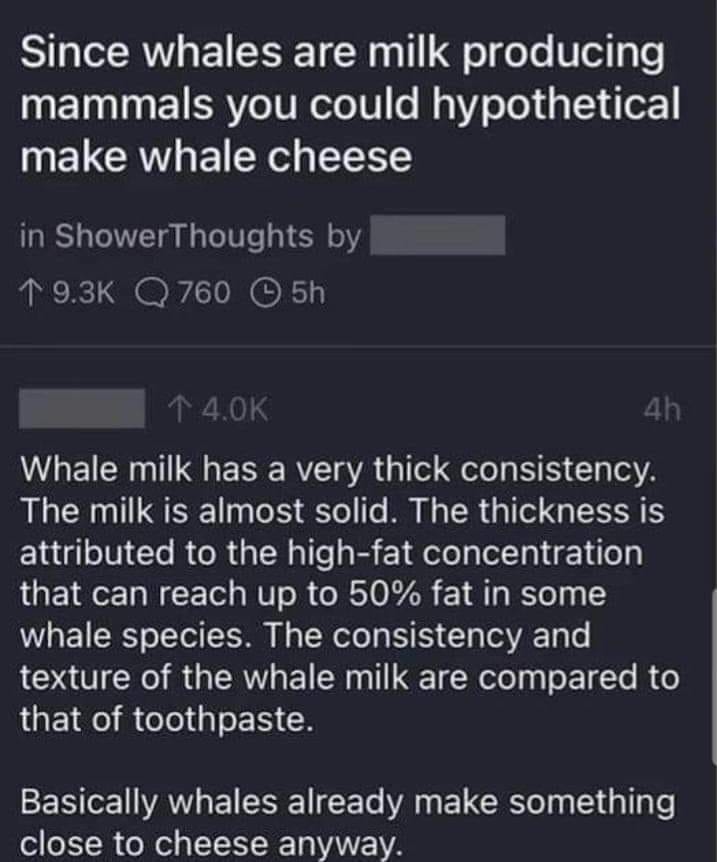this post was submitted on 10 Apr 2024
839 points (99.2% liked)
Science Memes
14549 readers
691 users here now
Welcome to c/science_memes @ Mander.xyz!
A place for majestic STEMLORD peacocking, as well as memes about the realities of working in a lab.

Rules
- Don't throw mud. Behave like an intellectual and remember the human.
- Keep it rooted (on topic).
- No spam.
- Infographics welcome, get schooled.
This is a science community. We use the Dawkins definition of meme.
Research Committee
Other Mander Communities
Science and Research
Biology and Life Sciences
- [email protected]
- [email protected]
- [email protected]
- [email protected]
- [email protected]
- [email protected]
- [email protected]
- [email protected]
- [email protected]
- [email protected]
- [email protected]
- [email protected]
- [email protected]
- [email protected]
- [email protected]
- [email protected]
- [email protected]
- [email protected]
- [email protected]
- [email protected]
- [email protected]
- [email protected]
- [email protected]
- [email protected]
- !reptiles and [email protected]
Physical Sciences
- [email protected]
- [email protected]
- [email protected]
- [email protected]
- [email protected]
- [email protected]
- [email protected]
- [email protected]
- [email protected]
Humanities and Social Sciences
Practical and Applied Sciences
- !exercise-and [email protected]
- [email protected]
- !self [email protected]
- [email protected]
- [email protected]
- [email protected]
Memes
Miscellaneous
founded 2 years ago
MODERATORS
you are viewing a single comment's thread
view the rest of the comments
view the rest of the comments

So I’m not a biologist either but I’m going to speculate on the temp thing. (Somewhat educated speculation - science of all varieties is my jam)
Basically my hypothesis is that between insulation and size, they aren’t capable of losing heat fast enough to fall below their baseline temp, but any old temp would probably have worked fine, as long as their fats stay liquid (and for all I know that’s 36C, but that seems highly unlikely - you’d want to be several degrees warmer in case of emergency, else you’d get stiff and die for sure).
They have a nice layer of fat for insulation and that’s all well and good, but they are massively huge and a lot more spherical than most animals. So, they have a small surface area to volume ratio, and lose heat slower as a result. And because they are huge, and muscle twitch is heat generating (to say nothing of leaky heat-producing brown fat, idk if they have this, but most mammals seem to for thermoregulation), they likely produce a gob of heat internally just existing. Much like we believe the larger dinosaurs were endothermic due to sheer size (and some evidence from their bone structure).
Side note - Imagine how many calories it would take to maintain basal metabolic rate when you are losing that heat to 4C water at literally all times. It takes us about 1500-2000 calories for this function and we only lose heat to air that’s relatively close to our body temp.
I did a super quick scan of melting points of various fats, and while without knowing exact compositions of whale blubber idk the melting point, a surprising amount of the animal fats we use for cooking melt around 25-40C, with most large terrestrial animals (cow, pig, deer, etc.) falling between 32-40C (goose fat was the 25C).
If their composition hadn’t worked, though, they could have evolved a polyunsaturated fat (like fish oil) with a lower melting point.
Anyway, thanks for coming to my ted talk ;)